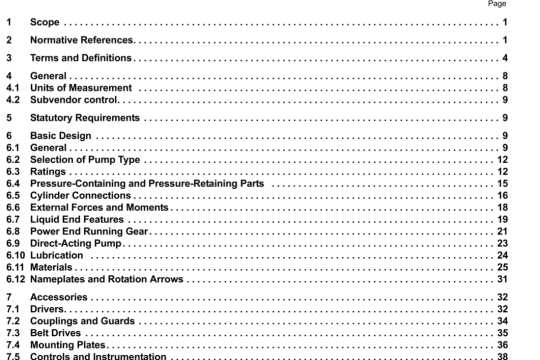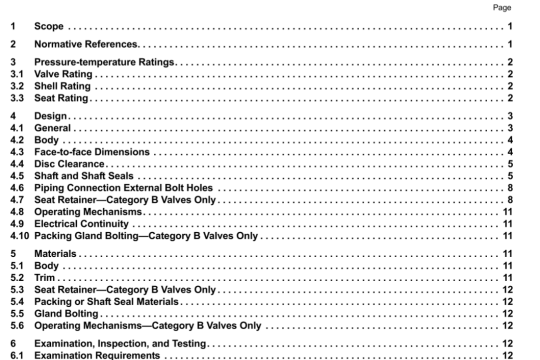API RP 10B-3:2004(R2015) pdf download
API RP 10B-3:2004(R2015) pdf download.Recommended Practice on Testing of Deepwater Well Cement Formulations.
5 Preparation of slurry
5.1 Preparation of conventional cement slurry
Prepare the test samples in accordance with Clause 5 of ISO 10426-2:2003. The laboratory temperature of the cement sample. additives, and mix water should be within ± 2 C (± 3 °F) of the respective temperature anticipated at the well site. The temperature of the mixing container should approximate that of the mix water being used In the slurry design. The mixing device shall be calibrated annually to a tolerance of t 200 r/mln at 4 000 r!min rotational speed and 500 rlmin at 12 000 r/min rotational speed.
If larger slurry volumes are needed, an alternative method for slurry preparation can be found in Annex A of
ISO 10426-2:2003.
NOTE The dens4y of the cement skirry can be determined by methods found In Clause 6 of ISO 10426-2:2003
5.2 Preparation of speciality cement slurries
Cementing operations in deepwater environments may requEre the use of speciality cements, including foamed cement or microsphere-contalning cement formulations. The preparation and testing of these speciality cement formulations should be undertaken using the best available methods or methods mutually agreed upon by the service provider and the end user.
6 Strength tests for deepwater well cements
6.1 General information
The strength development of cement used in a deepwater cementation can be influenced by many factors, induding heat of hydration. casinglwellbore size, final slurry location (annulus or shoe track), and initial slurry temperature. Given the number of vanables contributing to the rate of strength development in a deepwater well, the temperature and pressure schedule should be determined by means of numerical heat transfer simulation or by field measurement from an offset well(s). In this way, the test schedule can reflect as closely as possible the actual temperature and pressure profiles found after placement.
The preferred method for determining the strength of deepwater cement is by means of a non-destructive sonic test method. Non-destructive sonic testing of a cement slurry may be conducted by methods provided In Clause 8 of ISO 10426-2:2003. Speciality cement systems, as described in 5.2, may employ destructive testing to determine compressive strength.
The energy produced by hydrating cement generates a considerable amount of heat. In a large annulus typically found in the top-hole section of a deepwater well, it is expected that the hydration exotherm (thermal mass effect) may raise the temperature within the annulus significantly. As such, a general guideline is to conduct the strength test at a low curing temperature for only as long as the cement remains unset. Once initial strength of 345 kPa (50 psi) is reached, the curing temperature may be raised to reflect the hydration exotherm.
6.2 Sampling methods
The sampling methods for strength testing are provided in Clause 4.
6.3 Preparation of slurry
The slurry shall be prepared in accordance with Clause 5.




